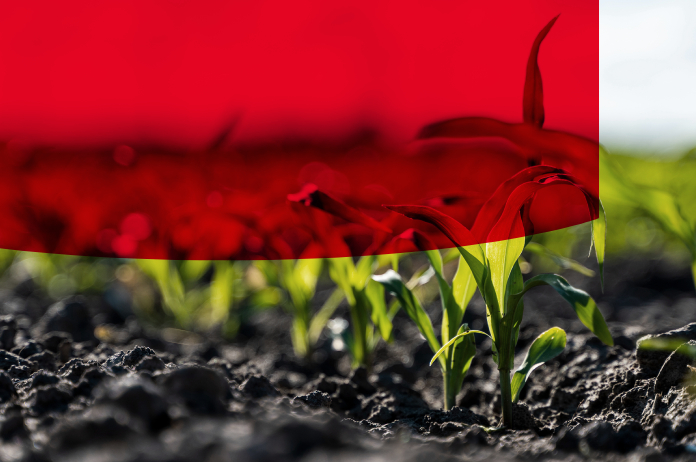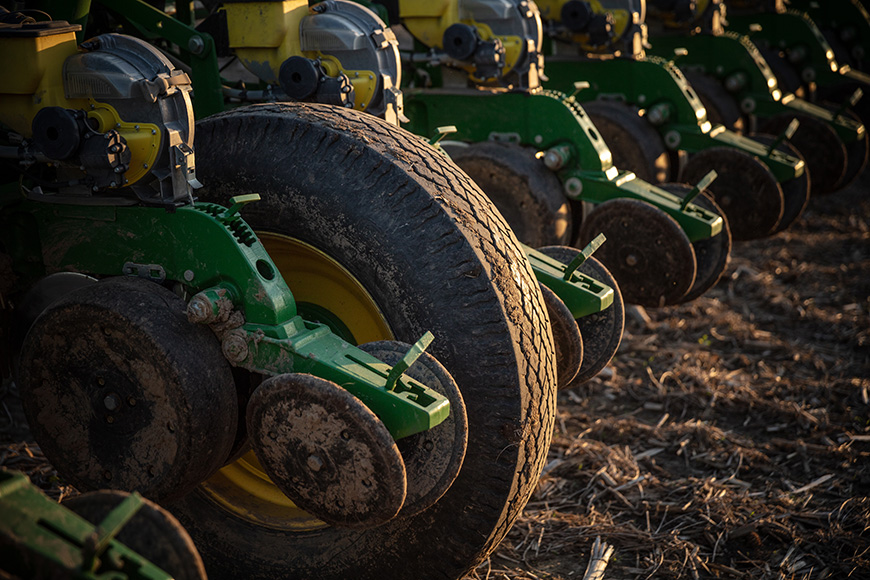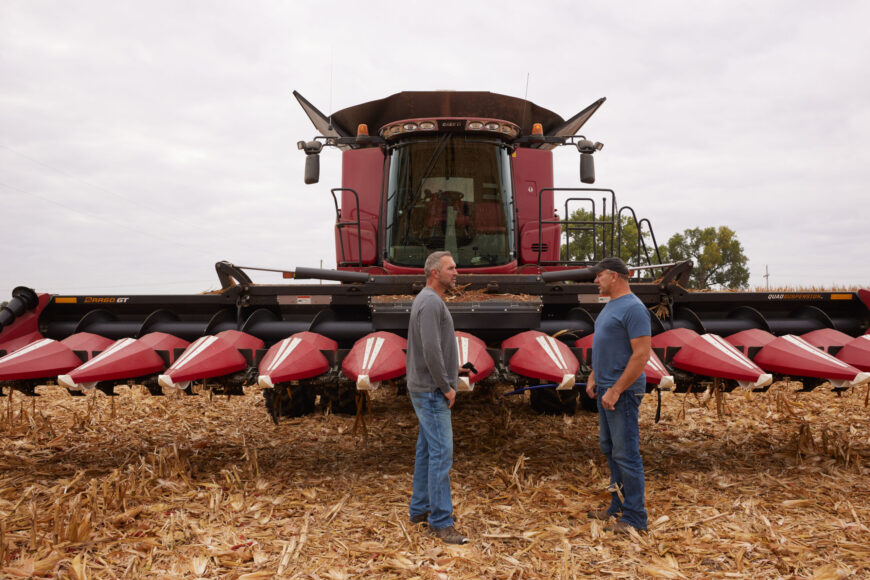May 16, 2022
4 Considerations For Replant Decisions
Glenn Longabaugh

The decisions you make at planting have season-long impacts, so evaluating your crop’s stand is critical for optimizing yield potential. If weather or poor soil conditions leave you with a poor-looking crop early on, you may consider a replant. But, before you pull the trigger, consider the economic and agronomic consequences. Often the yield penalty you get from a later planting date is worse than having a suboptimal stand. Here are a few tips for managing potential replant situations.
Plant population
The logical place to start when evaluating replant options is plant population, but don’t use population alone as the basis for your decision. Take several population counts throughout the field to account for field variability, and compare averages with your as-planted population. If you have a reduced stand with healthy, uniform plants, the potential yield loss may not be worth the effort and cost of replanting.
Spatial variability
Another critical consideration is spatial variability. Evenly distributed plants have higher yield potential. If you notice areas in the field with spacing gaps larger than 3 feet, a replant may be warranted. Though plants compensate fairly well for small gaps, larger voids are more detrimental to yield potential.
Temporal variability
Seed that emerges at different times due to less-than-optimal conditions can also result in yield reductions. Larger plants will shade out smaller ones, and it won’t be easy to get good coverage with crop protection products with such variability. Evaluate growth stage variability and scrutinize stands with more than two leaf collars difference between plants.
Crop health
The final consideration for replanting is crop health. Dig up plants and observe the roots and stems for signs of trouble. Healthy plants will have turgid, white mesocotyls (corn) and hypocotyls (soybeans). Browning, soft roots could indicate seedling diseases that will result in further stand loss. Seedling diseases can also live latent in plants for some time and predispose them to yield loss and lodging later in the season.
Choose suitable seed varieties
It’s tempting to adjust the relative maturity of your seed when you decide to replant. In most cases, I recommend sticking with the same relative maturity of the original planting unless planting is significantly delayed. If you’re concerned about crop dry-down in a shorter growing season, you can reduce the relative maturity of your seed as long as it is still well adapted for your area. For example, if it’s customary to plant 109- to 115-day hybrids in your geography, choosing a 105-day hybrid for replanting isn’t wise. That seed hasn’t been bred for the environmental conditions and stresses it could face outside its adapted zone. A better option is to stick with a 109-day hybrid that is well-suited to your geography.
Avoid patching-in
As a general rule, trying to patch in areas of poor stands is not productive for a couple of reasons. First, you’re more likely to overpopulate spots of the field, which can lead to increased disease susceptibility and lodging. And, you could cause injury to your good plant stands by bringing in equipment for replanting. If there are instances where there are clear delineations for good and bad stands, patching in could be a viable option. But, in most cases where the stand is patchy throughout a field, killing off the crop and replanting the entire area is more beneficial.
Manage nitrogen
Many replant situations result from heavy rains that inhibit proper germination and emergence or threaten plant health. A good amount of nitrogen has likely been lost from fields in those cases. An additional nitrogen application can support a replanted crop’s healthy growth and ensure it has the nitrogen it needs during peak uptake around pollination time.
Replanting is a subjective decision that requires you to balance agronomics and economics to optimize your profitability potential. Your local WinField® United retailer is a valuable resource to help you weigh the risks and rewards of replanting your crop.
All photos are either the property of WinField United or used with permission.
© 2022 WinField United. Important: Before use always read and follow label instructions. Crop performance is dependent on several factors many of which are beyond the control of WinField United, including without limitation, soil type, pest pressures, agronomic practices and weather conditions. Growers are encouraged to consider data from multiple locations, over multiple years and to be mindful of how such agronomic conditions could impact results. WinField is a trademark of WinField United. All other trademarks are the property of their respective owners.
Assess early-season stands
Plant population, spatial variability, temporal variability and overall crop health are important factors to consider when contemplating a replant.Plant population
The logical place to start when evaluating replant options is plant population, but don’t use population alone as the basis for your decision. Take several population counts throughout the field to account for field variability, and compare averages with your as-planted population. If you have a reduced stand with healthy, uniform plants, the potential yield loss may not be worth the effort and cost of replanting.
Spatial variability
Another critical consideration is spatial variability. Evenly distributed plants have higher yield potential. If you notice areas in the field with spacing gaps larger than 3 feet, a replant may be warranted. Though plants compensate fairly well for small gaps, larger voids are more detrimental to yield potential.
Temporal variability
Seed that emerges at different times due to less-than-optimal conditions can also result in yield reductions. Larger plants will shade out smaller ones, and it won’t be easy to get good coverage with crop protection products with such variability. Evaluate growth stage variability and scrutinize stands with more than two leaf collars difference between plants.
Crop health
The final consideration for replanting is crop health. Dig up plants and observe the roots and stems for signs of trouble. Healthy plants will have turgid, white mesocotyls (corn) and hypocotyls (soybeans). Browning, soft roots could indicate seedling diseases that will result in further stand loss. Seedling diseases can also live latent in plants for some time and predispose them to yield loss and lodging later in the season.
Evaluate the cost of a later planting date
In addition to the four considerations above, keep in mind the costs associated with replanting and any yield loss that may come from a shortened growing season. Even if it’s suboptimal, an early planted stand often has more yield potential than a perfect stand planted a month later. Purdue University reports that estimated yield loss per day with delayed planting varies from about 0.3% per day early in May to about 1% by the end of May. Several factors, including a shorter growing season, more insect and disease pressure, and greater risk of hot, dry conditions during pollination, contribute to decreases in yield potential as planting is delayed.Don’t rush to replant
After evaluating your field and deciding to replant, you probably want to dive right in. But, my recommendation is to finish planting the rest of your acres first and then reevaluate fields that may need to be replanted. Doing this allows the crop more time to grow, giving you a better sense of overall crop health before investing in replanting.Make the most of your replant
When it’s time to replant, consider these management tips to optimize your success the second time around.Choose suitable seed varieties
It’s tempting to adjust the relative maturity of your seed when you decide to replant. In most cases, I recommend sticking with the same relative maturity of the original planting unless planting is significantly delayed. If you’re concerned about crop dry-down in a shorter growing season, you can reduce the relative maturity of your seed as long as it is still well adapted for your area. For example, if it’s customary to plant 109- to 115-day hybrids in your geography, choosing a 105-day hybrid for replanting isn’t wise. That seed hasn’t been bred for the environmental conditions and stresses it could face outside its adapted zone. A better option is to stick with a 109-day hybrid that is well-suited to your geography.
Avoid patching-in
As a general rule, trying to patch in areas of poor stands is not productive for a couple of reasons. First, you’re more likely to overpopulate spots of the field, which can lead to increased disease susceptibility and lodging. And, you could cause injury to your good plant stands by bringing in equipment for replanting. If there are instances where there are clear delineations for good and bad stands, patching in could be a viable option. But, in most cases where the stand is patchy throughout a field, killing off the crop and replanting the entire area is more beneficial.
Manage nitrogen
Many replant situations result from heavy rains that inhibit proper germination and emergence or threaten plant health. A good amount of nitrogen has likely been lost from fields in those cases. An additional nitrogen application can support a replanted crop’s healthy growth and ensure it has the nitrogen it needs during peak uptake around pollination time.
Replanting is a subjective decision that requires you to balance agronomics and economics to optimize your profitability potential. Your local WinField® United retailer is a valuable resource to help you weigh the risks and rewards of replanting your crop.
All photos are either the property of WinField United or used with permission.
© 2022 WinField United. Important: Before use always read and follow label instructions. Crop performance is dependent on several factors many of which are beyond the control of WinField United, including without limitation, soil type, pest pressures, agronomic practices and weather conditions. Growers are encouraged to consider data from multiple locations, over multiple years and to be mindful of how such agronomic conditions could impact results. WinField is a trademark of WinField United. All other trademarks are the property of their respective owners.
IF YOU LOVE OUR INSIGHT, YOU’LL LOVE OUR ROI POTENTIAL
Every successful harvest starts with a seed. It just can't end there. Choose which high-performing seed products you’ll start with this season.




_1.jpeg?ext=.jpeg)

